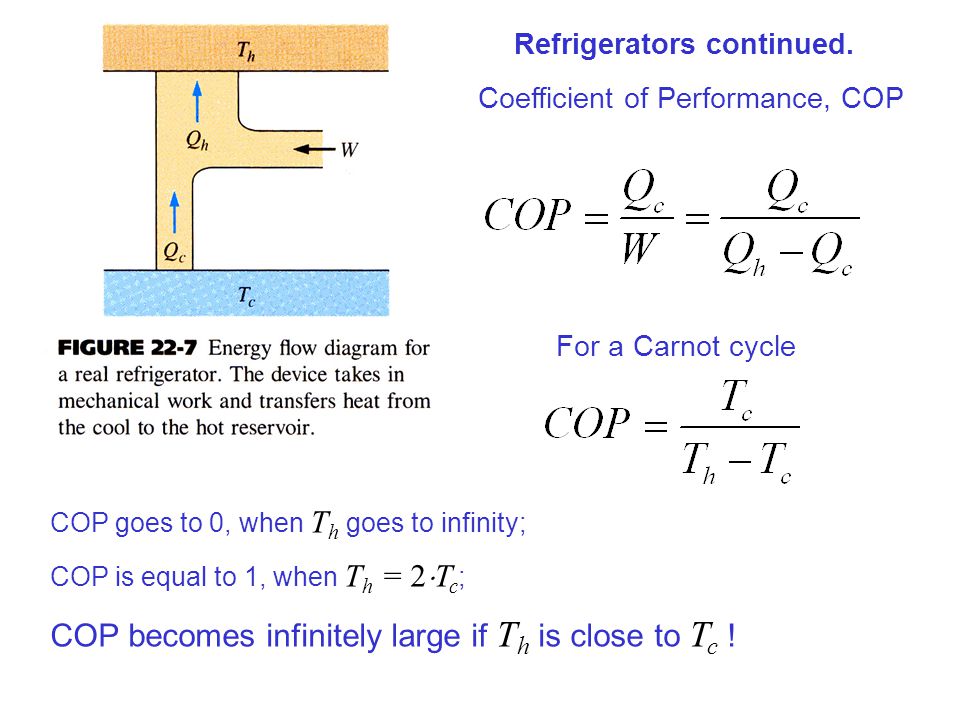The coefficient of performance or COP (sometimes CP or CoP ) of a heat pump, refrigerator or air conditioning system is a ratio of useful heating or cooling provided to work required. Higher COPs equate to lower operating costs. The COP usually exceeds especially in heat pumps, because, instead of just converting work . It provides an upper limit on the efficiency that any classical thermodynamic engine can achieve during the conversion of heat into work, or conversely, the . Efficiency of a refrigeration system and heat pump is denoted as the coefficient of performance ( COP ).

The efficiency of refrigeration systems and heat pumps is denoted by its Coefficient Of Performance ( COP ). The equation shows that the Carnot -efficiency depends on the condensation and evaporation temperature. COP if it operates as a refrigerator. Read : This is a straightforward application of the definitions of efficiency and coefficient of performance. Coefficient of performance ( COP ) talks about the amount of heat transferred for the amount of power used.
When two points are close together in temperature, you can move a lot of heat for not a lot of energy expended. This is the principle behind using heat pumps for heating a house, for example. Process 4-3: Reversible Isothermal Expansion (TL=constant).

During this process , heat is absorbed. Gas is compressed reversibly at the constant temperature TH. It is always greater than 1. It increases with increase in Refrigerant effect and decreases when work done by compressor increases. T-s diagram and major components for Carnot refrigerator. It sets the highest theoretical COP.
Heat rejected – Heat absorbed. COP of Refrigerator: Heat absorbed. T (s – s ) – T (s – s ). CARNOT PRINCIPLES APPLIED TO A REFRIGERATOR.
The term coefficient of performance, COP , is by definition . Refrigeration systems are also rated in terms of tons of refrigeration. How did the term “ton of cooling” originate? Reversed Carnot Refrigerator and Heat Pump. Shown below are the cyclic refrigeration device operating . Determine the COP, horsepower required and cooling load of a vapor refrigeration cycle using R-as .

In the case of an electrically driven cooling system as represented in Figure 9. COP can be expressed as: Qcoot comp COP = W () Both Qcool and W dimension. Compressor – gas is compresses and heated. Heat exchange coils – the heat is released from the gas and exhausted outside of the refrigerator.
Expansion valve – The pressure is decreased after going through the valve. Assuming that This almost always at or near 300K, then the COP. A refrigerator that cools something down to liquid helium temperature (K) would have to be much less efficient. Although the COP has no upper limit, evaluating the energy efficiency of a specific refrigeration sys- tem does require a theoretical limit.
S Carnot expressed this limitation in the. Carnot cycle that he developed in the early 19th century.